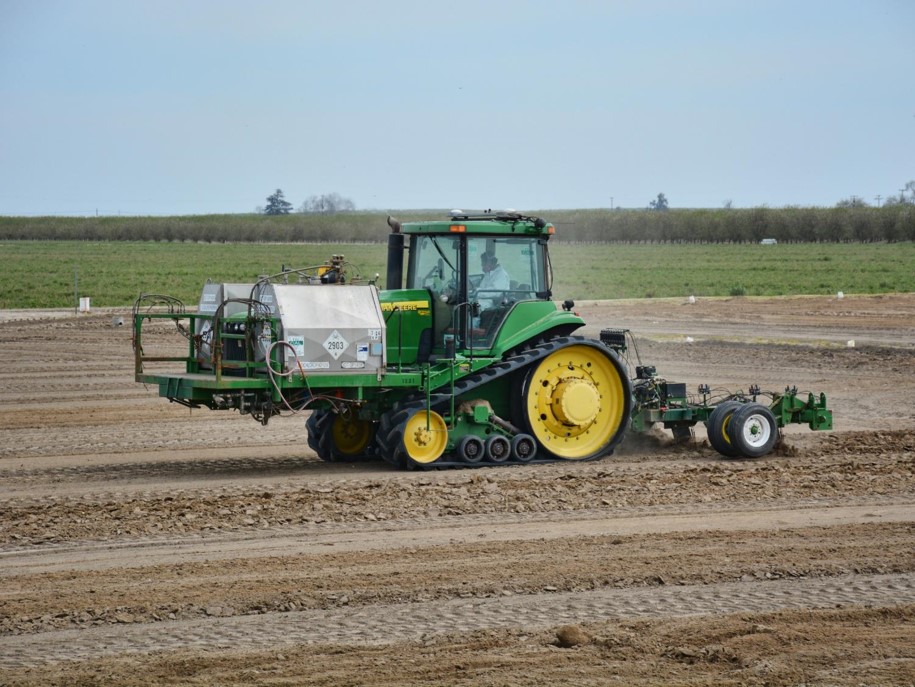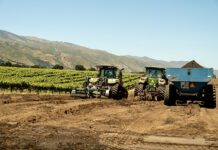
It has become a theme in California, where pesticides are under an unprecedented attack from every possible side. From Proposition 65 requirements; to possible new notification requirements and buffer zones; to an increase in the tax on all pesticides, this administration has made it abundantly clear they intend to change the landscape in California. And if they have it their way, the future will not include pesticides. Governor Newsom has even been quoted as describing the situation as a “harmful overuse of pesticides in this state”.
Well, no chemical is feeling this pressure more than 1,3-Dichloropropene (1,3-D), more commonly known as Telone. Currently, the California Department of Pesticide Regulation (CDPR) is looking at mitigation controls and new notification requirements, plus an increased mill tax on 1,3-D while the California Office of Environmental Health Hazard Assessment (OEHHA) is looking at new requirements under Prop 65. If all were to go through as proposed, it would make the use of this already heavily restricted use fumigant very difficult.
Mitigation Requirements and Buffer Zones
For a couple of years now, CDPR has been looking to “mitigate” risk to bystanders and residents from the use of 1,3-D. These measures would include buffer zone requirements, application rate limits and tarping. On mitigation, specific measures being looked at include the use of totally impermeable film (TIF) tarps, pre-application moisture content of 70% field capacity by irrigation and looking at an injection depth of 24 inches compared to the standard 18 inches, and/or various combinations of these measures. The Western Agricultural Processors Association (WAPA) is involved in this effort to actually measure how effective these measures will be and has secured a grower in Stanislaus County where the site will be tested for the difference in emissions. If 1,3-D is to survive, it is imperative some type of mitigation measure rise to the top of being effective, but remain reasonable from a cost perspective.
Potential Notification Requirements
Another relatively new issue is notification of the application of 1,3-D. This issue came to a head as part of the AB 617 process for the City of Shafter and its Community Emission Reduction Plan (CERP). However, there has been mounting pressure by pesticide activists to know about all pesticide applications, whether the person receiving the notification is impacted or not. In an example of how far reaching the activists are, and how this is not about local impacts, Monterey County had instituted a notification system by email. It was later determined that 56% of those that signed up did not even live in California. Now, the activist community in Kern County have brought this to the forefront as they have applied continuous public pressure on State DPR Director Val Dolcini and Kern County Ag Commissioner Glenn Fankhauser, even going so far as writing letters to the Kern County Supervisors demanding that Fankhauser be fired for not adopting a more robust and far-reaching notification system. To date, Fankhauser has remained resolute in his stance, stating he is willing to look at an enhanced notification system, but not one proposed by the radical activists.
Proposed Mill Tax Assessment Increase
In the Governor’s recent Budget Change Proposal, DPR requests $16.75 million ($8.25 million General Fund and $8.5 million DPR Fund) and 44.0 positions in 2021-22, and CDFA requests $11.75 million General Fund in 2021-22, as part of a comprehensive proposal to support the “state’s transition to safer, sustainable pest management.” Additionally, DPR proposes to replace the current flat-fee mill assessment on pesticide sales with a risk-based tiered mill assessment, where higher-toxicity pesticides are assessed a higher fee. Once fully phased in by 2024-25, the tiered mill assessment is anticipated to generate approximately $45 million in additional revenue annually to the DPR Fund. The additional revenue will fund various DPR and CDFA programs and will increase support to the county agricultural commissioners for local pesticide use enforcement activities to accelerate the state’s transition away from harmful pesticides.
It is that risk-based tier system that is a problem—a big problem. The risk-based system uses the “signal word as determined by U.S. EPA” for the different categories, and naturally fumigants are classified by “danger” and fall into the highest category. Their mill assessment will go from 21 mills to 45 mills: more than doubling the tax on that class of pesticides. Again, 1,3-D takes the hit. There are no effective alternatives to 1,3-D, so no way to avoid this tax.
1,3-D and Prop 65
OEHHA is the lead agency for the implementation of the Safe Drinking Water and Toxic Enforcement Act of 1986 (Proposition 65). This past month, OEHHA granted a Petition for Rulemaking submitted by Californians for Pesticide Reform (CPR). The goal is to develop a Prop. 65 No Significant Risk Level (NSRL) for 1,3-D. This chemical was added to the list of chemicals known to the State of California to cause cancer for purposes of Prop. 65 in January 1989. A copy of the Petition and Response letter is available on the OEHHA website at oehha.ca.gov/Proposition-65. An NSRL is a “safe harbor” level at which an exposure poses no significant risk. Businesses do not have to provide warnings for exposures below an NSRL. When an exposure is above an NSRL, a business may have liability under Prop. 65 but may demonstrate by other means that the exposure poses “no significant risk” of cancer.
OEHHA intends to develop an NSRL for 1,3-D and is requesting scientific information that may be relevant to the development of an NSRL for this chemical. Written comments on this request must be received by OEHHA by April 27, 2021 to be considered during the development of this NSRL. Opportunity for public comment on the proposed NSRL will be provided when OEHHA initiates a formal rulemaking process to adopt an NSRL for 1,3-D. Because of limited in-office staffing during the COVID-19 emergency, OEHHA strongly recommends that submissions be made electronically through their website at oehha.ca.gov/comments. This is the latest in a string of challenges against 1,3-D and we should be prepared to expect more in the future if the industry is to preserve this critical tool.
It is the combination of these measures that mandates we take action. Now is not the time to sit idly by and hope for the best. Support your commodity organization or local farm bureau. Do not think that this won’t impact every single grower in this state. It may be 1,3-D now, but it will be glyphosate or another chemical right around the corner. Now is the time to push back. Agriculture in this state is the safest in the world. Make sure everyone knows it!















